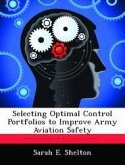The Air Force's Prompt Global Reach concept describes the desire to have a capability to reach any target within a 9000 nautical mile radius within two hours of launch. To meet this objective, much effort is being devoted to hypersonics and re-entry vehicles. Given the limited maneuverability of hypersonic vehicles, computational modeling is used to generate trajectories before launch to strike intended targets. In addition to endpoint (target) constraints, additional waypoints may constrain the trajectory. This research finds the optimal trajectory which satisfies the endpoint and waypoint constraints, and then investigates where else the vehicle can go while still meeting the mission objectives and the penalty for making such maneuvers. The result of this research is a direct numerical solution technique for mapping the sensitivity of the terminal state as a function of additional waypoint location. Multiple cases are presented including a simple endpoint-to-endpoint scenario and a waypoint included scenario, with a Gauss pseudospectral solver as the direct numerical solver.
Hinweis: Dieser Artikel kann nur an eine deutsche Lieferadresse ausgeliefert werden.
Hinweis: Dieser Artikel kann nur an eine deutsche Lieferadresse ausgeliefert werden.








